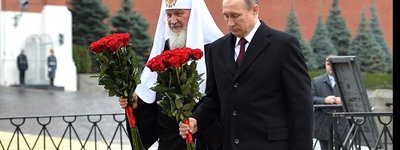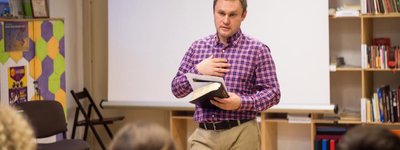Vocation Location
In his public address in New York last October 5, sponsored by the Ukrainian Patriarchal Society, Bishop Borys Gudziak spoke of the Ukrainian Greek-Catholic Church’s various strengths and weaknesses, as well as the threats it faces and the opportunities it should not overlook. Among the UGCC’s weaknesses in the diaspora he cited the laity’s negative attitude towards vocations. Preoccupied with placing their children in the professions, the laity in North America prefer to import pastors from Ukraine.
Strictly speaking, the problem is not in vocations, that is, callings to the priesthood or consecrated life, but in the absence of positive responses. And the reason that individuals who may feel a calling fail to respond to it is most likely to be found in the attitudes of their families, communities, and society. It is, in a broad sense, the “culture” that surrounds them. This culture, with its emphasis on wealth, success, and prestige, discourages young people from even considering the priestly or monastic life.
It is not only a problem in the Ukrainian Catholic Church. The Roman Catholic Church, too, has experienced a drastic fall in North American vocations over the past forty or fifty years. According to the Center for Applied Research in the Apostolate (CARA) at Georgetown University, despite the increase in population, the number of diocesan priests in the United States has fallen from 35,925 in 1965 to 26,558 today. The number of ordinations has fallen from 994 in 1965 to 511 in 2013. Today, a Latin-rite parish will often have a pastor from Asia, Africa, or Latin America. In 2008, a third of newly ordained Roman Catholic priests in the United States were foreign-born – especially from Mexico, Vietnam, Poland, and the Philippines.
There has also been a long-term drop in the number of Ukrainian Catholic priests, from about 300 in 1958 to 215 in 2010 (AnnuarioPontificio for 2010). Today, a Ukrainian Catholic parish will often have a pastor from Ukraine – or possibly Brazil or Argentina.
Why are there fewer vocations in North America (and western Europe) than elsewhere? The common wisdom is that in underdeveloped countries, seminary is the only way for a poor youth to get an education, and the priesthood means a secure livelihood. Others point to the secularization of the advanced industrialized West, and its materialistic culture. Or perhaps the reason lies in the fact that Christianity is, in a sense, a religion of the poor: think of the rich man and Lazarus (Luke 16: 19-31). Wealthy countries are on the wrong side of the chasm that separates the saved from the damned.
One can argue that a foreign pastor may have difficulty adjusting to life in North America and, more importantly, understanding the mentality of his flock. But a number of émigré Ukrainian Catholic priests have made excellent pastors for congregations which include members of the Third Wave and their progeny as well as the new arrivals of the Fourth Wave.
Indeed,Ukraine is exporting faithful as well as pastors. Some old American parishes have suffered from a dwindling membership as the post-war generation died out, and few of their children have remained with the church. The emptying pews have been filled by new immigrants. In those localities, parish life has revived, resembling in some ways the situation of the 1950s, with new arrivals served by newly immigrated priests.
But what of the future? How long will Ukraine continue to export priests? Pastors are needed, after all, in central, eastern and southern Ukraine, too. Others need to serve migrant workers or emigrants in western Europe, Russia, and Central Asia. But if the supply dwindles, the demand may dwindle too. As long as there is a stream of immigrants into North America, the parishes will thrive. But if US and Canadian restrictions on immigration tighten, or the economy offers fewer prospects for employment, the Fourth Wave may become a trickle. Meanwhile, the post-1991 generation of immigrants and their children will gradually succumb to assimilation, with some leaving the church. The experience of the Third Wave may thus be replicated. In that case, both parish and clergy will shrink. In other words, the problem will solve itself.
But does assimilation with US or Canadian culture necessarily mean secularization and abandonment of the church? Bishop Borys’ comment about diaspora values suggests it might. And yet, those “secular” values are nothing new. The Third Wave was composed to a great extent of the western Ukrainian intelligentsia, which had become secularized long before the Red Army entered Eastern Galicia in September 1939. Indeed, much of that intelligentsia were sons of married priests, who had chosen secular careers over the priesthood. Although the Third Wave supported the church in the emigration, its values remained essentially the same. Today, there is no reason for optimism: the children and grandchildren of the Third Wave, and those of the Fourth as well, are likely to conform to the secularism of contemporary American society. At most, they may follow the example of many of their Roman Catholic and Protestant fellow citizens, who have tailored their religious beliefs to suit their way of life, rather than the other way round.
And yet, one never knows. Cultural history has its ups and downs. The West may yet rediscover religion – though this is most likely to happen in the wake of some cataclysm. In that case, will the Ukrainian diaspora churches be ready to channel the new religious impulse in an orthodox direction? That, in the long run, may be the greatest challenge for a new crop of vocations.










